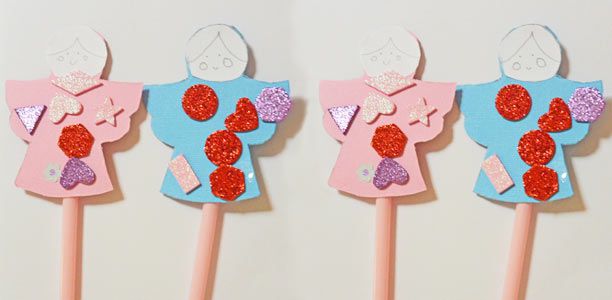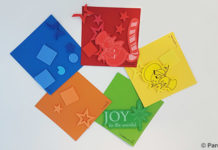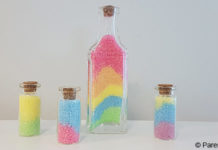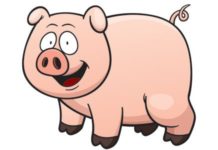Age
18 months plus
Duration of activity
1/4 to ¾ hour
Materials/equipment
- Angel puppet template
- Coloured cardboard
- Glue Stick
- Drinking straws
- Sticky tape
- Colouring pencils, crayons or textas
- Embellishments, for examples glitter, stickers, petals, leaves, old wrapping paper or glossy magazine cuttings or anything else you can find around the house.
Cost
You should already have most of the things you need for this activity in your child’s craft box.
Preparation
- Cut out the template and trace it onto coloured cardboard. Pre-schoolers and older children should be able to do this part themselves with a bit of help.
- Cut out the angel faces. Pre-schoolers and older children who are already able to cut curved lines will be able to do this themselves, or may want to draw the faces themselves rather than gluing them on.
What to do
- Show your child the angel and talk with them about angels (or fairies depending on your religious beliefs) and Christmas. What you discuss will depend on your child’s age and your reasons for celebrating Christmas.
- Tell your child that today you will turn the angel on the paper into a beautiful Christmas angel, by adding colourful decorations.
- Give your child a glue stick and ask them to spread glue on the back of the angel’s face, then stick the face to the front of the angel (the opposite side to the straw). Or ask the child to draw their own face on the angel.
- Instruct your child to embellish the angel, using textas, glitter, stickers, petals etc. Whatever decorations they choose encourage them to cover the entire body. Older children may enjoy making intricate patterns whereas toddlers will be pleased with themselves just for sticking things on the angel.
- Instruct your child to stick a straw to the back of the angel using tape. Younger children will need help with this as they won’t yet have developed the control needed to manipulate the sticky tape.
- Talk about their decorations when they have finished. For example ask your child to tell you what colours they have used and describe the patterns they have drawn.
Tips
- Children can use angels to make a puppet show or sing Christmas tunes.
- Put the angels on top of muffins, cupcakes or other treats as Christmas decorations.
- Don’t stick on the straw and make a little hole at the top of the angel and thread string through the top to hang as Christmas tree decoration.
- Staple lots of angels to a piece of string to hang on the wall as a Christmas decoration.
- Use child safe, non-toxic glue.
- Use small, child safe scissors and talk to your child about scissor safety, for example how to hand scissors to another person without point the blades at them.
Safety
Educational outcomes
Fine motor skills
Cutting
Toddlers and pre-schoolers will not have the cutting skills necessary to cut out angels or their faces, but they’ll enjoy having a go. Toddlers may only be able to snip at the edge of the paper (and they may use both hands to manipulate the scissors to do that). They’ll gradually improve and start holding the scissors correctly, with only one hand to cut straight and curved lines and around corners.Letting your child cut as best they can and helping them out when they’re done gives them an opportunity to practice cutting and further develop their skills.By the start of primary school most kids can cut curved lines and around acute (closed) and obtuse (open) angles. They should be able to cut neatly around the angel body and face without your help.
Sticking and pasting
Toddlers will enjoy playing with glue, for example dolloping it onto the paper, but won’t yet be able to spread it out and will probably dollop more than they need. Three year olds will be able to handle stickers, sticky tape and paper cut outs with glue on one side, and stick them to the angel. They may like to spread glue on the angel and spread it out with their fingers, then stick adornments to the glue. From about four years of age children will be able to manipulate a glue stick, or spread glue evenly over the angel using a paintbrush.
Drawing and writing
Drawing and writing decorations on the angel is a great way for children of all ages to develop their fine motor skills. Although toddlers won’t be able to write or draw anything legible, they’ll probably have fun and definitely give their finger muscles a workout having a go. From about 18 months of age they’ll be able to hold fat crayons and pencils in their fist and jab at the paper. They’ll begin writing by moving their entire arm. By their third birthday most children are starting to hold a pencil with their fingers and starting to draw shapes and scribble which they may tell you is writing. Older children will have more developed drawing and writing skills and may adorn their angels with letters or words, lines and patterns.
Math skills
Decorating the angel will give your child plenty of opportunities to explore colour, pattern, size, shape and position. As they decorate their angels ask them questions and talk to them about the decorations. For example ask them to point to different shapes and name them, or count all the red decorations. Ask them to point to decorations of different sizes or ‘where is the square?’ Encourage them to use mathematical language to describe size and location. Toddlers will use basic words like big and small to describe size. As they grow and their mathematical vocabulary expands expect to hear them using a range of words to describe location and words to describe relative size (e.g. small, smaller and smallest instead of just small).
Communication and social skills
As you talk to your child about angels and Christmas and the things they are doing as they make their angel, they’ll be getting a valuable lesson on how to socialise and communicate with others. Young children learn the rules of conversation, things like taking turns to speak and answering when a question is asked, by having conversations and watching others converse. Talking about the world around them and the meaning of things like angels and days like Christmas also helps children understand the world around them and how they fit into it.
References
- Virginia Early Childhood Development Alignment Program. Milestones of child development- A guide to young children’s learning and development from birth to kindergarten. 2009. (cited 17 November 2014). Available from: (URL Link)
- Andrews General Categories of Fine Motor Development. Michigan State University Extension. UNDATED. (cited 3 December 2014). Available from: (URL Link)
- Australian Curriculum and Reporting Authority. Australian Curriculum- English. Undated. (cited 3 December 2014) Available from: (URL Link)
- Community Childcare Cooperative Ltd (NSW). Development Milestones and the Early Years Learning Framework and the National Quality Standards. Australian Government Department of Education, Employment and Workplace Relations. 2012. (cited 3 December 2014). Available from: (URL Link)
- South Carolina Education Office of Early Childhood Education. Good Start Grow Smart- South Carolina Early Learning Standards for 3, 4 and 5 year old children. 2007. (cited 3 December 2014) Available From: (URL Link)



 (4 votes, average: 4.00 out of 5)
(4 votes, average: 4.00 out of 5) 






